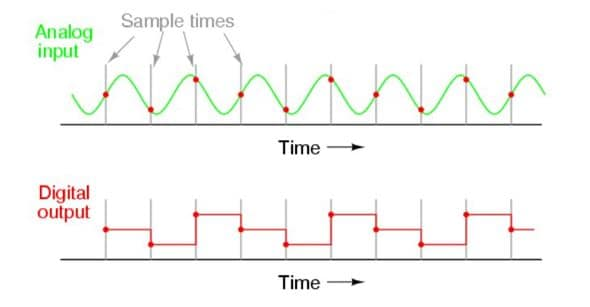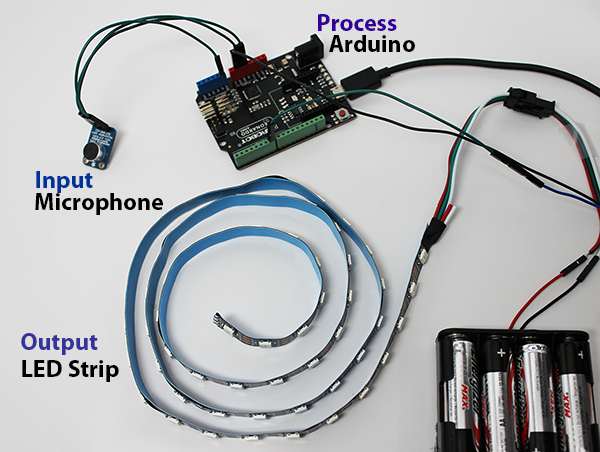
Music to light; getting music to control a light strip will take some processing. Digital electronics has made signal processing a science. To do this task, analog sound waves are converted to a digital signal which are then processed by a computer. This computer processed signal is then sent to the output LEDs which flash to the beat.

For this system, an amplified microphone, Arduino microcomputer and addressable LED strip are the input, process and output components. In this prototype, a microphone is used to input sound as an electrical signal. An Arduino microcomputer is used to process this input. The output is an addressable LED strip.
The microphone signals input are continuous sign waves. To convert these waves to a digital signal needed to control the LED strip, a measurement can be made at several points along the wave over time. Digital data is gathered by sampling the wave and giving each of these points a number relative to the previous point. This data can then be used to reproduce the wave or process the wave from for storage.

The Arduino microcontroller has a built-in analog-to-digital converter that reads the changing voltage (0-5v) of the wave and converts it to a number between 0 and 1023. This steaming value is processed to interface with an addressable LED strip.
The best way to build this system is to start with each component. Let's begin with the microphone build and test.